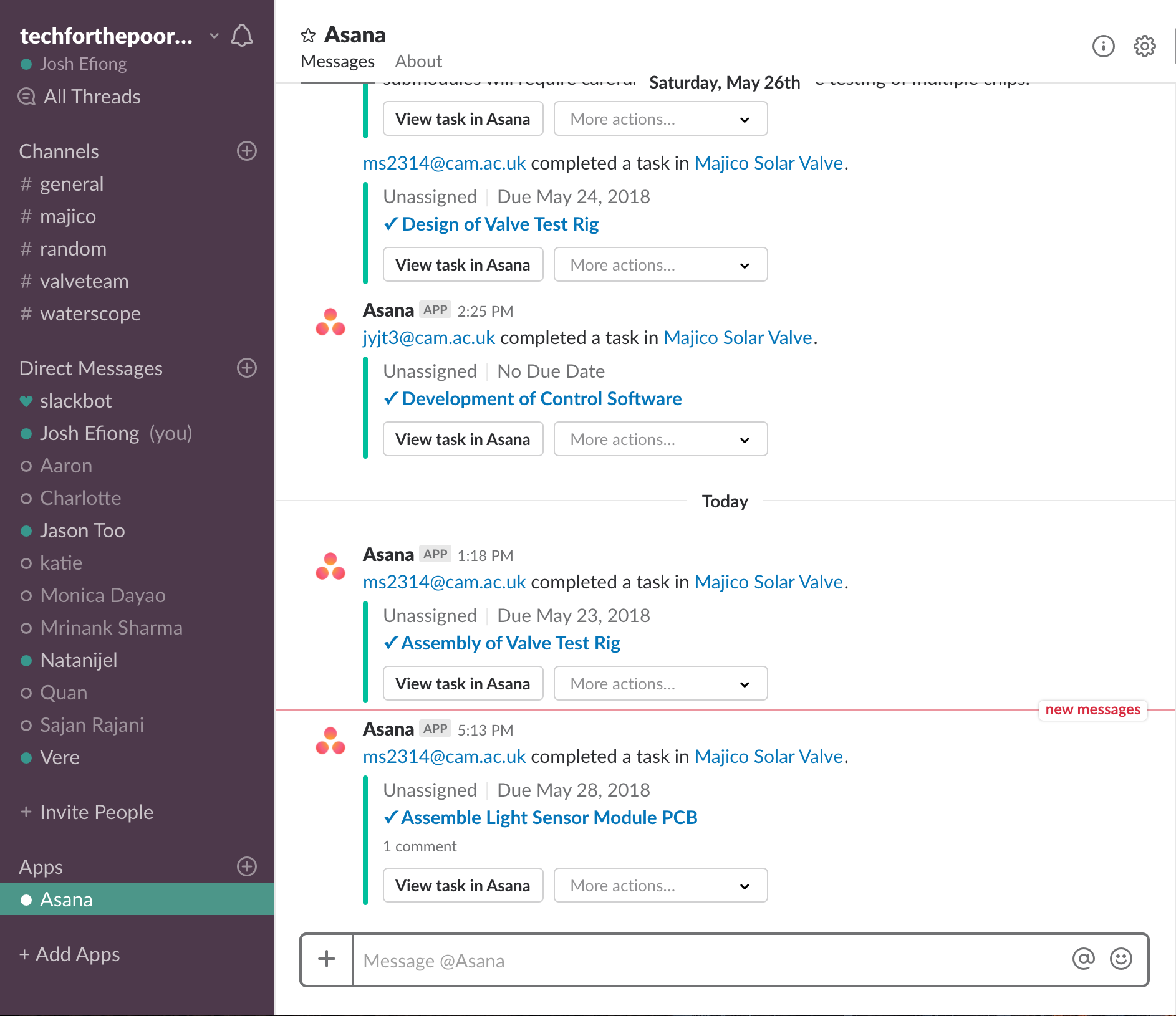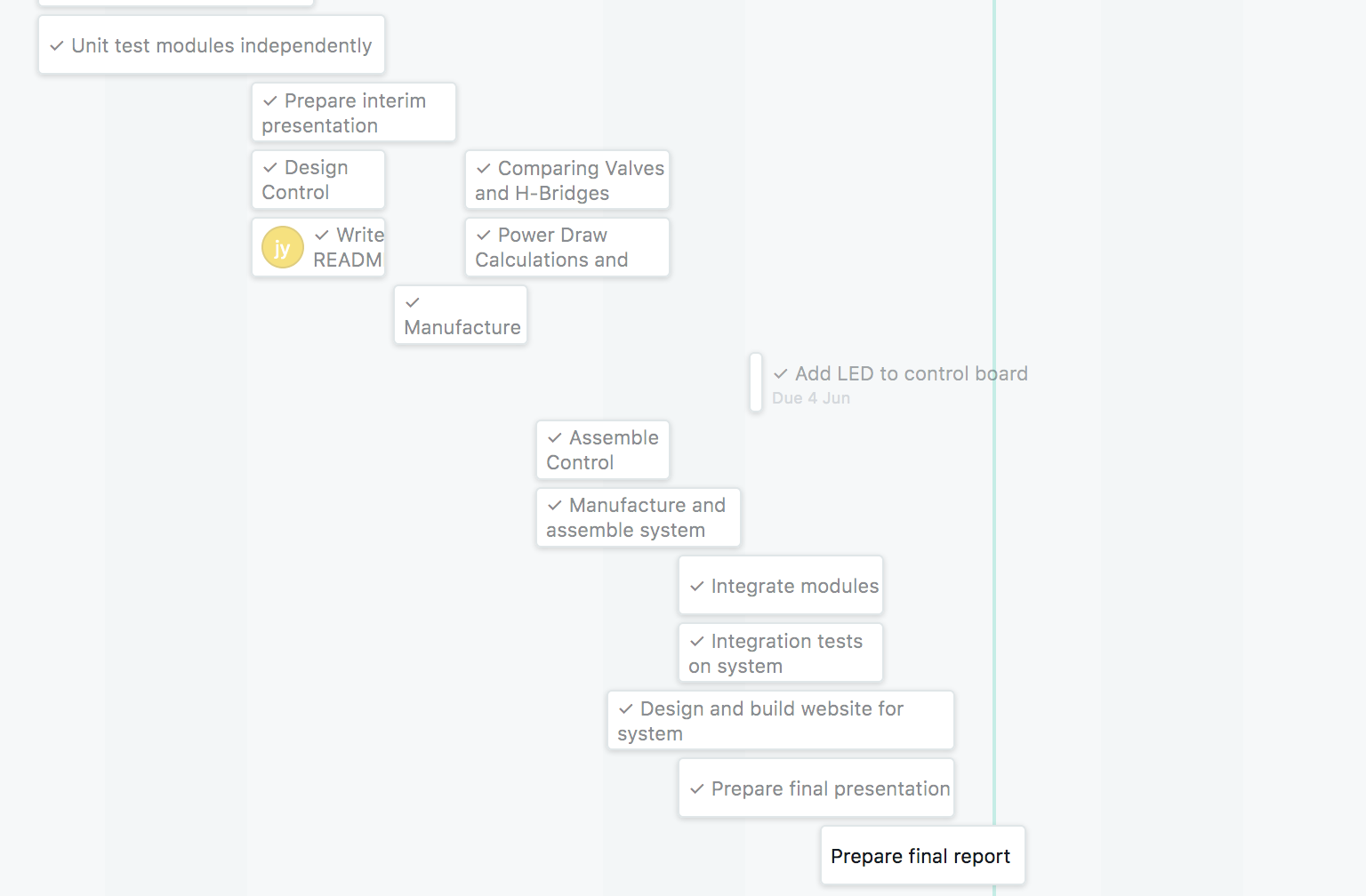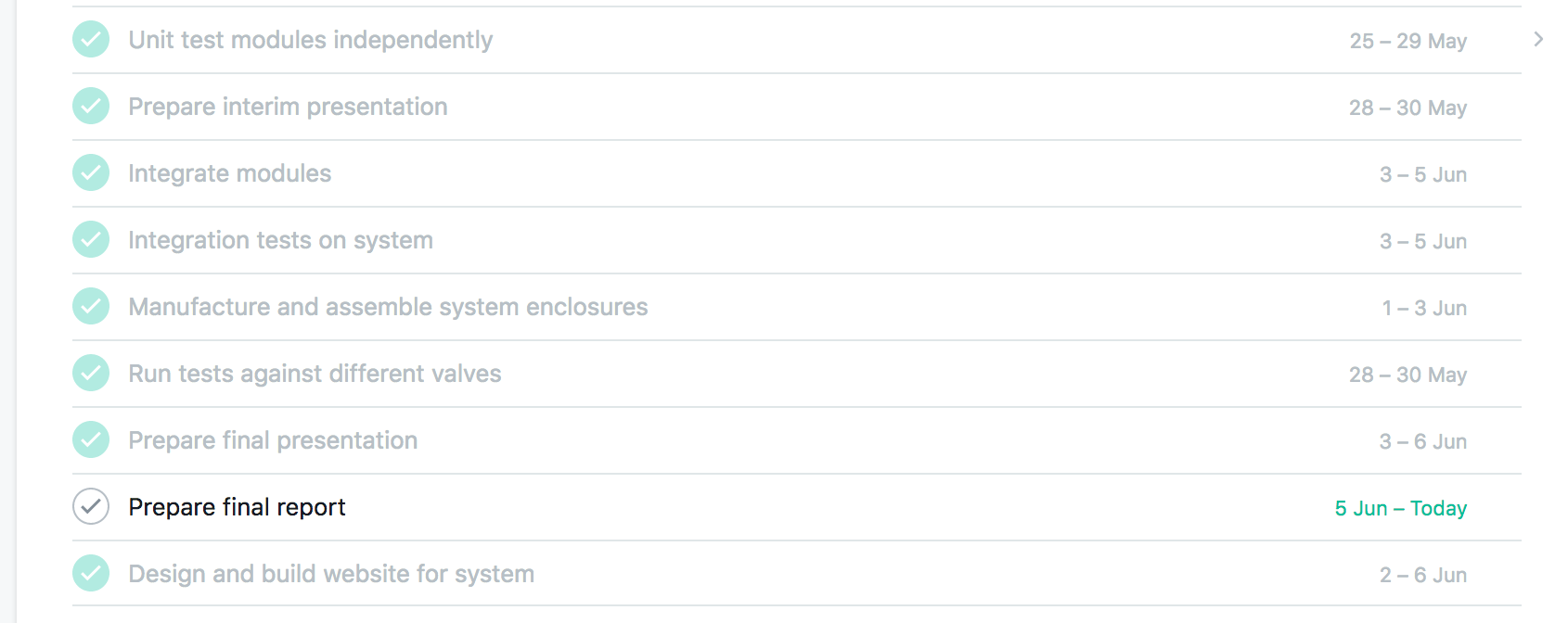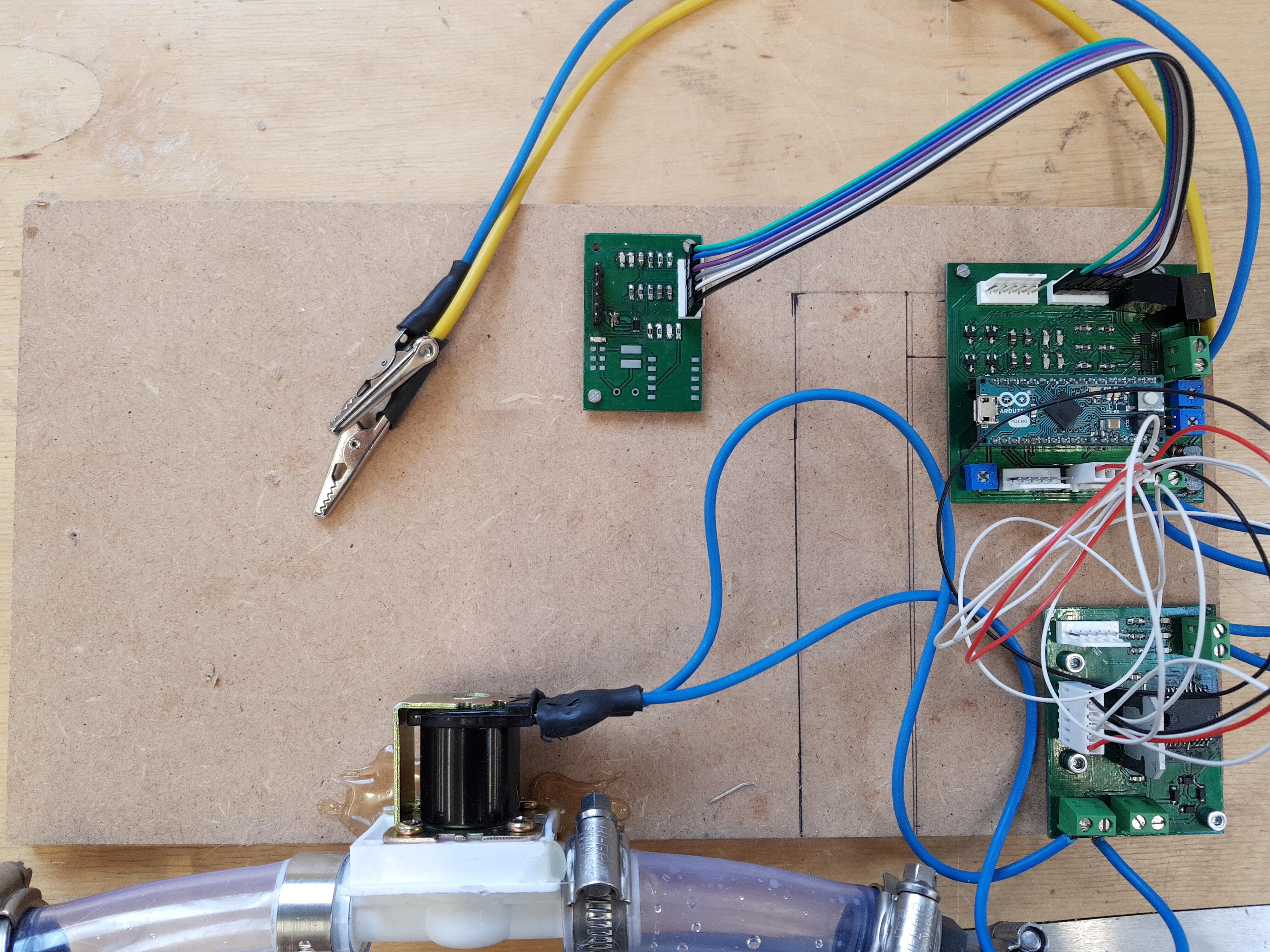Last Updated June 7th 2018
Team Statement: How we worked
The Valve Team consisted of only three members and was thus the smallest team. Due to the small number of team members, no rigid structure was put into place; work was done collaboratively and it was easy to see where each team member was at any given point. Thus the responsibility for ensuring that the project was on task was given to all team members. This worked well with all of the main aims of the project identified in the initial project proposal presentation fulfilled.
Early on, a decision was made to create a modular prototype. This greatly increased the efficiency of the team since each team member had a clearly designated task that they could work on and were responsible for. Design work was performed collaboratively with more experienced members of the team lending a hand to less experienced members when required.
Communication between team members and other teams was performed using Slack, a tool used for communication within teams. We found that this worked especially well and we were able to incorporate slack bots which link Slack to other services that we used such as Google Drive, GitHub and Asana.
This image shows Slack being used to integrate with Asana.

Asana was used for both time management and task management. All tasks which needed to be completed were placed on Asana and in certain situations, assigned to individuals so that they received email reminders. The timeline feature was used to create a Gantt chart and the ability to directly tie our 'to-do' list with the overall timeline was incredibly useful.
The image below shows the timeline feature in Asana used for time management.

The image below shows the corresponding 'to-do' list.

Resources were shared between team members primarily by storing all relevant documentation in a shared Google Drive. Code, PCB designs and schematics are all stored in our GitHub with clearly laid out repositories. This worked well for our purposes, enabling team members to not only collaborate but quickly and easily the resources when required.
Overall, the teamwork and project management was effective, partly aided by the small team size. Improvements could be made in ensuring that Asana was always kept up to date but we believe that the frequency of updates used was sufficient and we believe the deliverables of the project reflect this.
